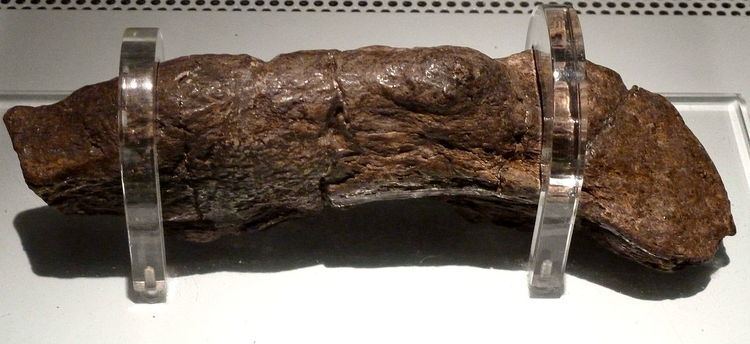Material Human excrement | Created 9th century AD Present location JORVIK Viking Centre | |
 | ||
The Lloyds Bank coprolite is a large paleofeces, or desiccated human dung specimen, recovered by archaeologists excavating the Viking settlement of Jórvík (now York) in England.
Contents
Description
It was found in 1972 beneath the site of what was to become the York branch of Lloyds Bank and may be the largest example of fossilised human faeces ever found. Analysis of the seven-inch-long (19.5 cm) stool has indicated that its producer subsisted largely on meat and bread whilst the presence of several hundred parasitic eggs suggests he or she was riddled with intestinal worms. In 1991, paleoscatologist Andrew Jones made international news with his appraisal of the item for insurance purposes: "This is the most exciting piece of excrement I've ever seen. In its own way, it's as valuable as the Crown Jewels".
Display
The specimen was put on display at the city's Archaeological Resource Centre (now known as DIG), the outreach and education institution run by the York Archaeological Trust. In 2003, it broke into three pieces after being dropped whilst on exhibition to a party of visitors. As of 2003, efforts were underway to reconstruct it.
As of 2008 the specimen has been on display at the Jorvik Viking Centre.
